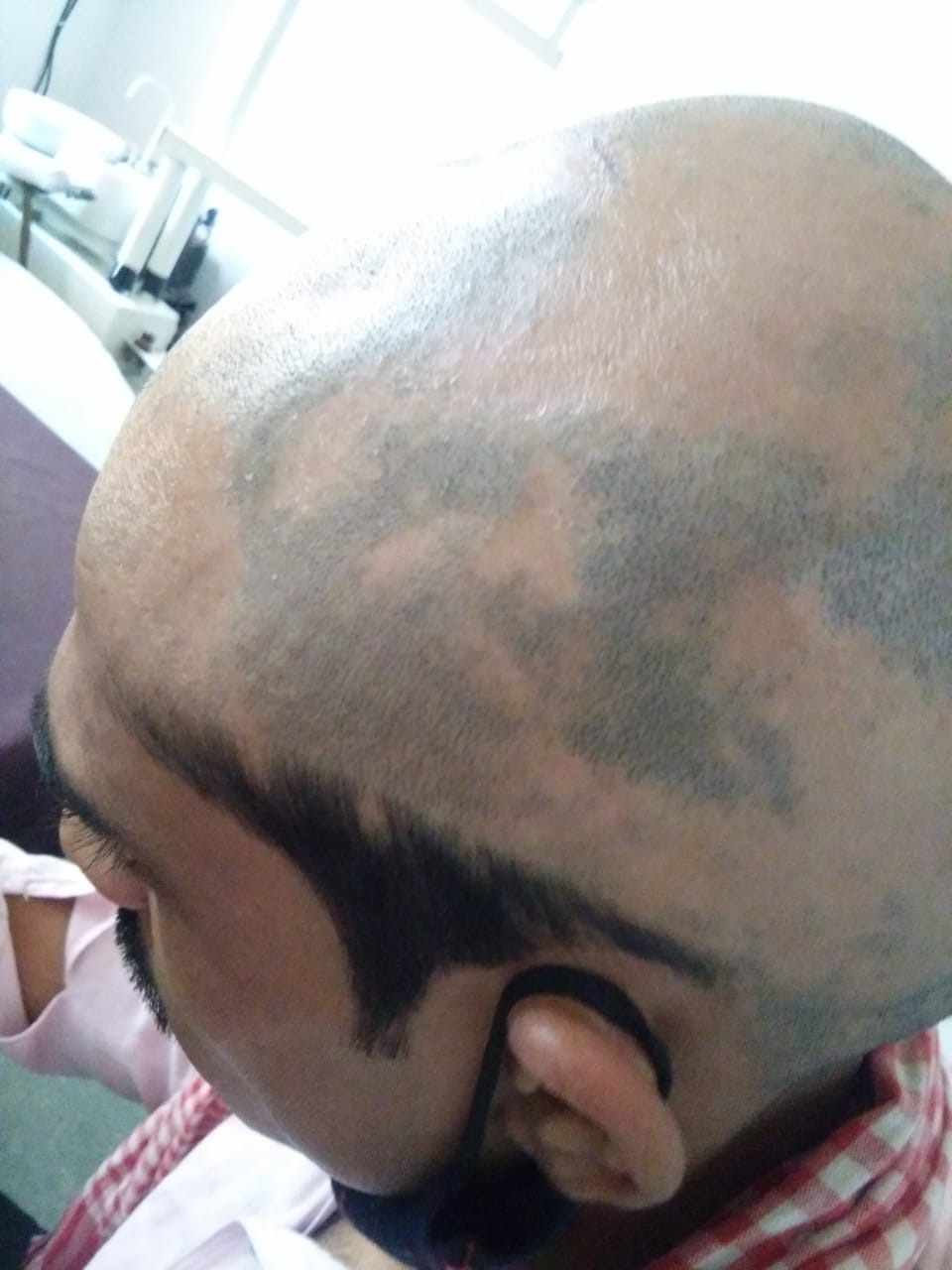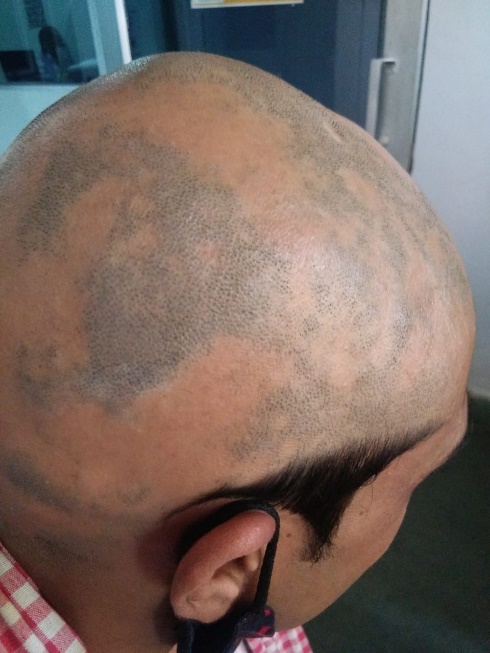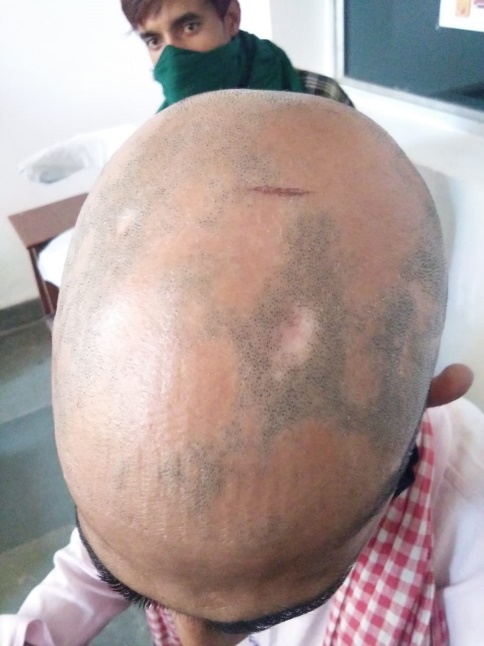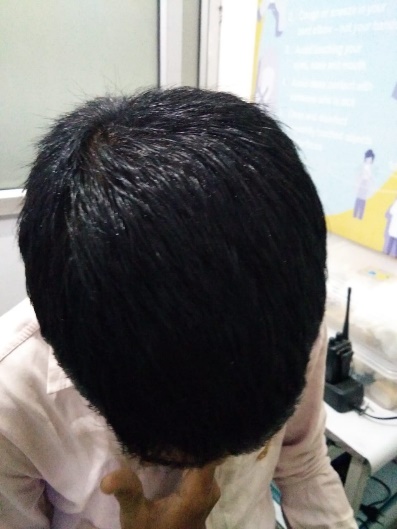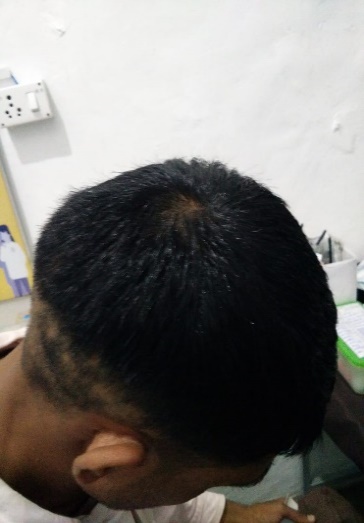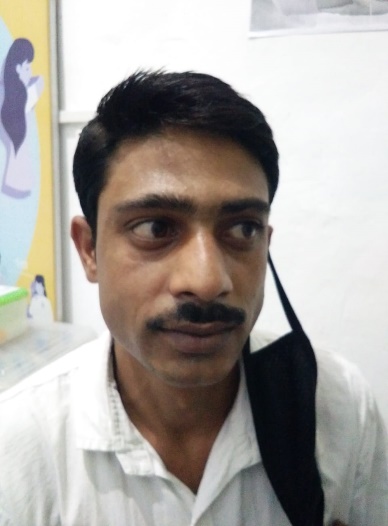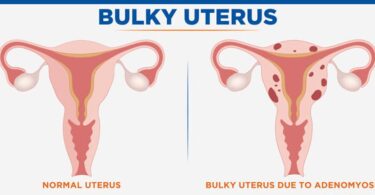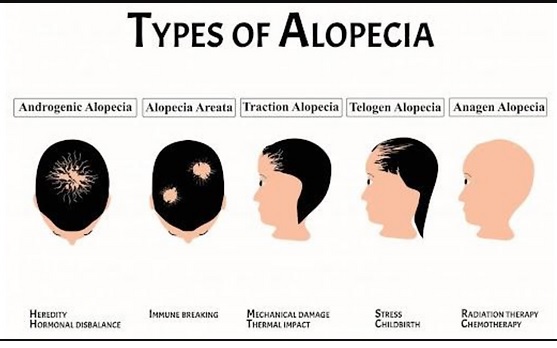
Alopecia Areata: Causes, Symptoms and Treatment with Homeopathic Medicine
Abstract : This is a case of 28 year male having hairfall with intense on scalp, moustache and beard treated at personal clinic with individualised homeopathy medicine. When patient came for consultation, he was presented with a bald head with slight patches of hair above the ear on both sides suffering since last 1 year. Systematic case taking followed by repertorisation of the totality of symptoms was done by Synthesis Repertory using RADAR software in order to choose the individualised remedy, and a few homoeopathic medicines including Tuberculinum, Arsenicum album, Lycopodium clavatum, Phosphorus, and others were shortlisted. The patient responded well to the individualised homoeopathic treatment, i.e. Tuberculinum 200 in 3 doses with gradual and steady recovery.
KEYWORDS
baldness, hairfall, alopecia areata, Tuberculinum, homoeopathy
Abbreviations:
VOLP: (Vocabulário Ortográfico da Língua Portuguesa) Brazilian Portuguese spelling vocabulary
DECS: health science descriptors (DeCS – Health sciences descriptors is a structured and trilingual thesaurus created by BIREME – Latin American and Caribbean center on health sciences information)
INTRODUCTION
Hair loss is mostly distressing and can have a significant effect on a person’s quality of life. It’s not a life-threatening condition but the patient feel depressed and definitely affects the way of living of the patient. The word “alopecia” comes from the Greek ἀλώπηξ (alōpēx), which means “fox”. It is an allusion to the constant hair loss suffered by these animals during life. According to the Brazilian Portuguese spelling vocabulary (VOLP), alopecia should not be marked with an accent (paroxytone stress) due to the influence of Latin (alopecia). The term is also registered this way among the health science descriptors (DECS) for scientific indexing in Brazil1-3.
The description of the classical clinical pattern of baldness in men is known since antiquity. As an example, Hippocrates’ (400 BC) observation may be cited that eunuchs did not develop baldness. Later, Joseph Plenck, in his book “Doctrina de Morbis Cutaneis” (Vienna, 1776) (Vienna, 1776) identified, in these cases, the miniaturization of hair follicles, which he called “calvities”.
NON-SCARRING ALOPECIA
Different kinds of alopecia are included under this category, for example, alopecia areata, androgenetic alopecia, telogen effluvium, taenia capitis, anagen effluvium, etc.
Alopecia Areata
Alopecia areata is an acute, patchy alopecia that affects up to 2% of the population with no difference between sexes4. Approximately 20% of affected patients are children. The aetiology is unknown, but the pathogenesis is likely autoimmune. Patients may have a single episode, or they may have remission and recurrence. The diagnosis can usually be made clinically. Hair loss in alopecia areata occurs in three different patterns: patchy alopecia is circumscribed, oval-shaped, flesh-coloured patches on any part of the body; alopecia totalis involves the entire scalp; and alopecia universalis involves the whole body. Evaluation of the scalp may reveal short vellus hairs, yellow or black dots, and broken hair shafts (which are not specific to alopecia areata). Microscopic examination of the hair follicles demonstrates exclamation mark hair (i.e. hairs that are narrower closer to the scalp and mimic an exclamation point; nail pitting is also associated with alopecia areata.5
Case report:
Personal data:
Name of the patient: Mr G
Age: 28years
Sex: Male
Marital status: Married
Address: Chhatarpur
Dated: 20/03/2021
Presenting complaints:
Patient complained of hairfall over the head, moustache and beard since 1year. There was itching over moustache, beard and scalp with much scratching. After scratching, hair fell out from that area.
History of presenting complaints:
Patient was apparently well 1 year back when gradually, he experienced hairfall from certain areas of scalp, moustache and beard.
Hairfall started as itching on the head and moustache with much scratching. After scratching, the hair over that area fell out as he pulled the hair.
Past history:
Patient suffered from typhoid fever and dengue 1 and 1/2years back. After drinking goat’s milk, eruptions appeared on the whole body.
After six months of typhoid fever, the complaint of hair fall started.
Complaint of constipation with hard stools, rumbling in abdomen after drinking and eating hot food and drinks since 1and ½ year
Early morning: stools hard and then soft, after taking tea, etc.
Protrusion of a mass during defaecation with pain
Diarrhoea after eating oily food
Family history:
History of tuberculosis (Father died of tuberculosis)
History of cancer (Brother died of cancer)
Physical generals:
- Appetite: Adequate
- Thirst: Thirsty with dry mouth, takes lots of water
- Desire: Cigarette, egg, milk
- Aversion: Nothing significant
- Intolerance: Oily food causes diarrhoea
- Stool: Unsatisfactory, first hard and then soft, pain during passing stool
- Perspiration: Profuse on nose, forehead and back, offensive
- Tongue: Dry, white coated
- Sleep: Normal, refreshing
- Dream: Nothing significant
- Thermal Reaction: Hot
Mental generals:
The patient was very restless and fastidious with want of any activity every time. He was very industrious, always did his work himself. He didn’t like when anyone scolded him without his fault. Desired for company but on getting angry, didn’t talk to anybody and wanted to sit alone, didn’t express his anger but got normal when someone consoled him. He had fear of height.
Analysis and evaluation of symptoms
| Physical generalsIntensity | Desire cigarette+ | Desire egg+ | Desire milk+ | Intolerance from fatty food causes diarrhoea++ | Pain during stool++ | Unsatisfactory stool, first hard then soft+ |
| Mental generalsIntensity | Restless++ | Fastidious++ | Want of activity every time++ | Desire company+ | Didn’t like to talk when angry+ | Didn’t express his anger+ |
| ParticularsIntensity | Hairfall over head with itching+++ | Hairfall over moustache and beard with scratching+++ | Scratching aggravation++ |
Provisional diagnosis:
Alopecia areata6
Totality of symptoms:
- Desires to do any activity every time
- Hairfall in patches on head, moustache and beard
- Hairfall with much itching and scratching
- Scratching on head causes falling of hair on that spot
- Unsatisfactory hard stools with pain during defaecation
- Family history of tuberculosis
- Medical history of typhoid fever
Rubrics7:
- Mind – activity – desires activity
- Head – hair- baldness, patches
- Head – hair – baldness, young people
- Head – hair – falling, spots in
- Rectum – pain – stool, during
- Generals – family history of – tuberculosis
- Generals – history – personal, typhoid fever, of
Analysis of the case:
After analysis and evaluation of the case the characteristic symptoms were used to form the totality “restless, desire to do any activity every time” were the important mental generals in this case. Hairfall over head, moustache and beard were the important particulars and pain during stool included in the physical generals, medical history of typhoid and family history of tuberculosis.
The selection of the remedy was based on repertorisation from RADAR 10 software using Synthesis treasure edition, 2009 by Frederick Schroyens20 withreportorial result showing top five remedies as Tuberculinum (10/7), Arsenicum album (9/4), Lycopodium clavatum (6/4), Phosphorus (6/4), and Sepia officinalis (6/4).
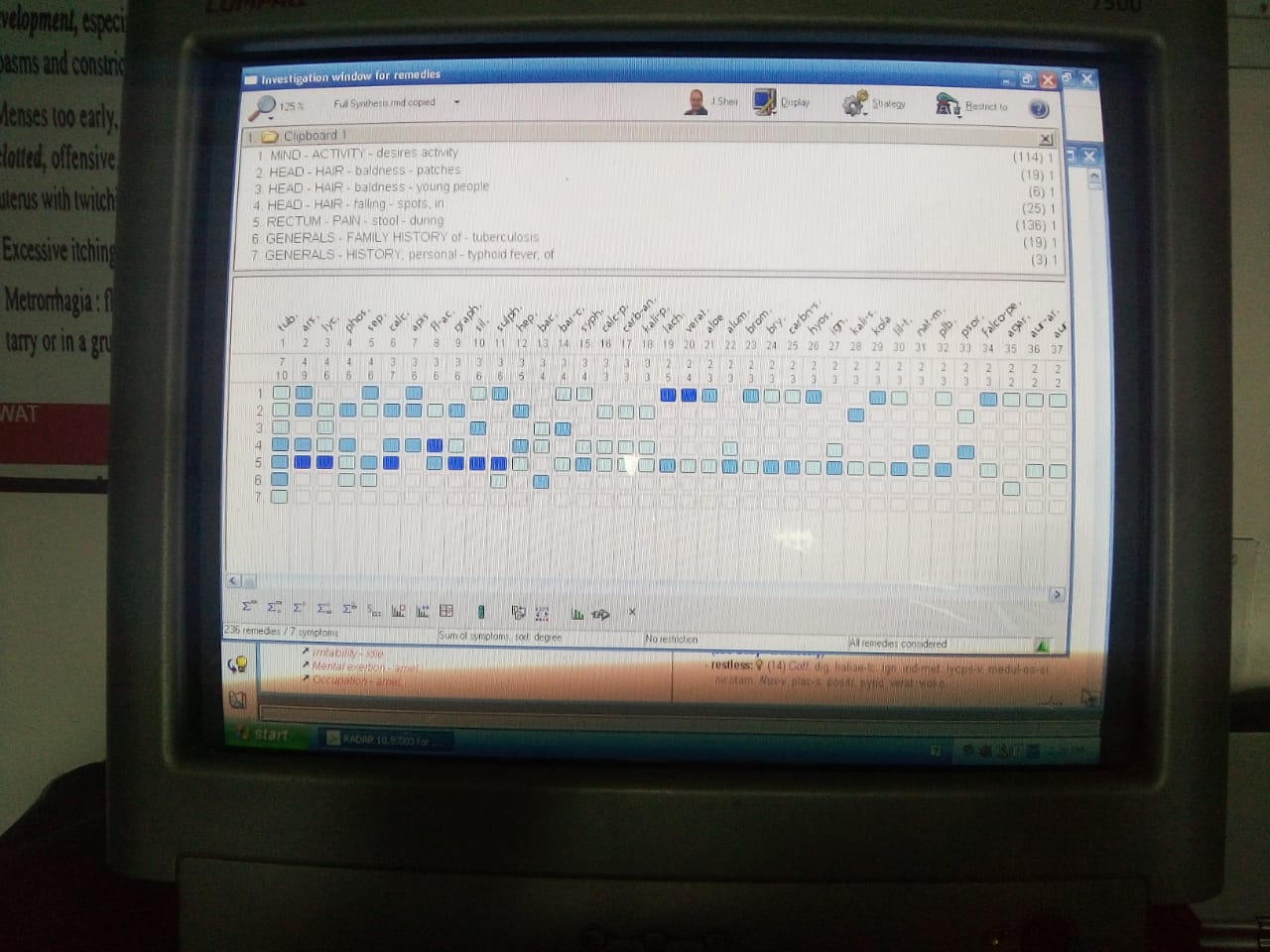
Prescription
Tuberculinum 200 / 3 doses
Basis of prescription:
After analysing the repertorial result and consultation with The Guiding Symptoms of Our Materia Medica8and The Dictionary of Practical Materia Medica21, Tuberculinum 200/ 3 doses were prescribed (including symptoms such as restlessness, desire of activity every time, hard stools with pain in rectum, desire of milk)9 and he also had history of tuberculosis and cancer in family accompanied with medical history of typhoid fever, although restlessness and other characteristic symptoms of the case were also present in Arsenicum album, Tuberculinum was selected as per the persisting tubercular miasm. Tuberculinum 200 was given in 3 doses after which the patient showed improvement in his complaints followed by placebo for 1 month
Potency– Thirtieth and much higher, in infrequent doses. When Tuberculinum fails, Syphilinum often follows advantageously, producing a reaction.10
Follow-up:
| DATE | SYMPTOMS | MEDICINES |
| 20-03-2021 | Patient Ist visit | Tuberculinum 200/ 3 dose (“The dose of medicine (of the first prescription) that acts without producing new troublesome symptoms in to be continued while gradually ascending, so long as the patient with general improvement, begins to feel in the mild degree the return to of one or several old original complaints”.) (Aph 248,280)11 |
| 09-04-2021 | Improvement in hairfall | Placebo |
| 10-05-2021 | Improvement in hairfall on head, still present over beard and moustache Itching persisted | Tuberculinum 200/ OD/ 3days (According to Kent’s 11th observation reappearance of older symptoms and the improvement is standstill then the repetition of the remedy should be prescribed)12 |
| 09-06-2021 | Further improvement in hairfall and itching, there was regrowth of hair on the bald spots | Placebo |
| 10-07-2021 | Slight improvement in hairfall from beard and moustache, Itching better | Placebo |
| 14-08-2021 | Slight improvement in hairfall from head Hairfall persists from beard and moustache Itching on the spots present | Tuberculinum 200/ 1 dose |
Patient: Before and after the treatment
Before
Patient: Before and after the treatment :
After
Discussion and conclusion:
Homoeopathic medicine selected on the basis of principles of homoeopathy proved to be very effective in this case of alopecia areata and shown good results of improvement. Tuberculinum was selected on the basis of family history of tuberculosis, medical history of typhoid fever and mental generals keeping in mind materia medica and homoeopathic principles. Treatment was continued for 5 months. There was marked improvement after the first prescription continued with placebo for 1 month. Next dose of Tuberculinum 200 was given after 2 months when the improvement became standstill.
The potency selection was done on the basis of susceptibility of the patient as stated by Dr Close13
1. The greater the
characteristic symptoms of the drug in the case, the greater the susceptibility
to the remedy and the higher the potency required.
2. Age: medium and higher potencies for children
3. Higher potencies for sensitive, intelligent
persons.
4. Higher potencies for persons of intellectual
or sedentary occupation and those exposed to excitement or to the continual
influence of drugs.
5. In terminal conditions, even the crude drugs
may be required.
He also writes, “different potencies act
differently in different cases and individuals at different times under
different conditions. All may be needed. No one potency, high or low, will meet
the requirement of all cases at all times.”
As the patient was young, the susceptibility was high but the disease was in organic stage and according to duration of disease moderate potency of 200 was selected for prescription.
REFERENCES
- Jmrezende.com.br, Rezende J M. Linguagem medica: Alopecia, alopecia. Anais Brasileiros de Dermatologia. 2011, [Internet], 01 Jul 2015, 90(4): 529-543. [Accessed on 17 Sep 2021]. Doi: 10.1590/abd1806-4841.20153370
- Decs.bvs.br. Descritores em ciências da saúde. Biblioteca Virtual em Saúde, [Internet] 2013. [Accessed 20 Sep 2021]. Disponível em: http://decs.bvs.br/cgi-bin/ wxis1660.exe/decsserver/
- Gordon KA, Tosti A. Alopecia: evaluation and treatment. Clin Cosmet Investig Dermatol. [Internet] 2011; [Accessed on 22 Sep 2021] Vol 4:101-106. doi:10.2147/CCID.S10182
- T. Grant Phillips, Md; W. Paul Slomiany, Md; And Robert Allison, Do, Hair Loss: Common causes and Treatment, AFP [Internet] 2017 Sep 15; [Accessed on 20 Sep] 96(6):371-378. http://www.aafp.org/afp.
- World Health Organisation (WHO), icd10data.com, 2022 ICD-10 -CM Diagnosis code [Internet], Geneva, Switzerland, World Health Organisation 1993; [Accessed on 30 Sep 2021], https://www.icd10data.com/
- Schroyens F. Radar 10 Homoeopathic Repertory Software. CDROM. Available from: http://www.archibel.com/radar10.html. [Accessed on 01 Nov 2021].
- Hering C. The Guiding symptoms of our Materia Medica, B.Jain Publishers, New Delhi.
- Clarke J H. The Dictionary of Practical Materia Medica, B.Jain Publishers, New Delhi
- Boericke W. Pocket Manual of Homoeopathic Materia Medica and
Repertory. 9th Reprint ed. New Delhi: B Jain Publishers; 2007. p. 152-3. - Hahnemann S. Organon of Medicine. 6th ed. New Delhi: B Jain Publishers; 2002. p. 227-8
- Kent J T. Lectures on Homoeopathic Philosophy. Archive.org [Internet]. Chicago. Ehrhart & Karl, 1919. [Accessed on 01 Nov 2021]. https://archive.org/details/lecturesonhomoe00kentgoog.
- Close Stuart M. The Genius of Homoeopathy: Lectures and Essays on homoeopathic philosophy. Homoint.org [Internet]. New York. Nanopathy, 1981. [Accessed on 2 Nov 2021]. http://www.homeoint.org/books4/close/index.htm.
About Author:
Dr Ajay Vishwakarma
Principal I/C, (Associate Professor/
HOD, Department of Anatomy, Chandola Homoeopathic Medical
College and Hospital, Rudrapur, U S
Nagar, Uttarakhand)
Dr Nitin Kumar
Professor/HOD, Department of Materia Medica, Chandola Homoeopathic Medical College and Hospital, Rudrapur, U S Nagar, Uttarakhand


